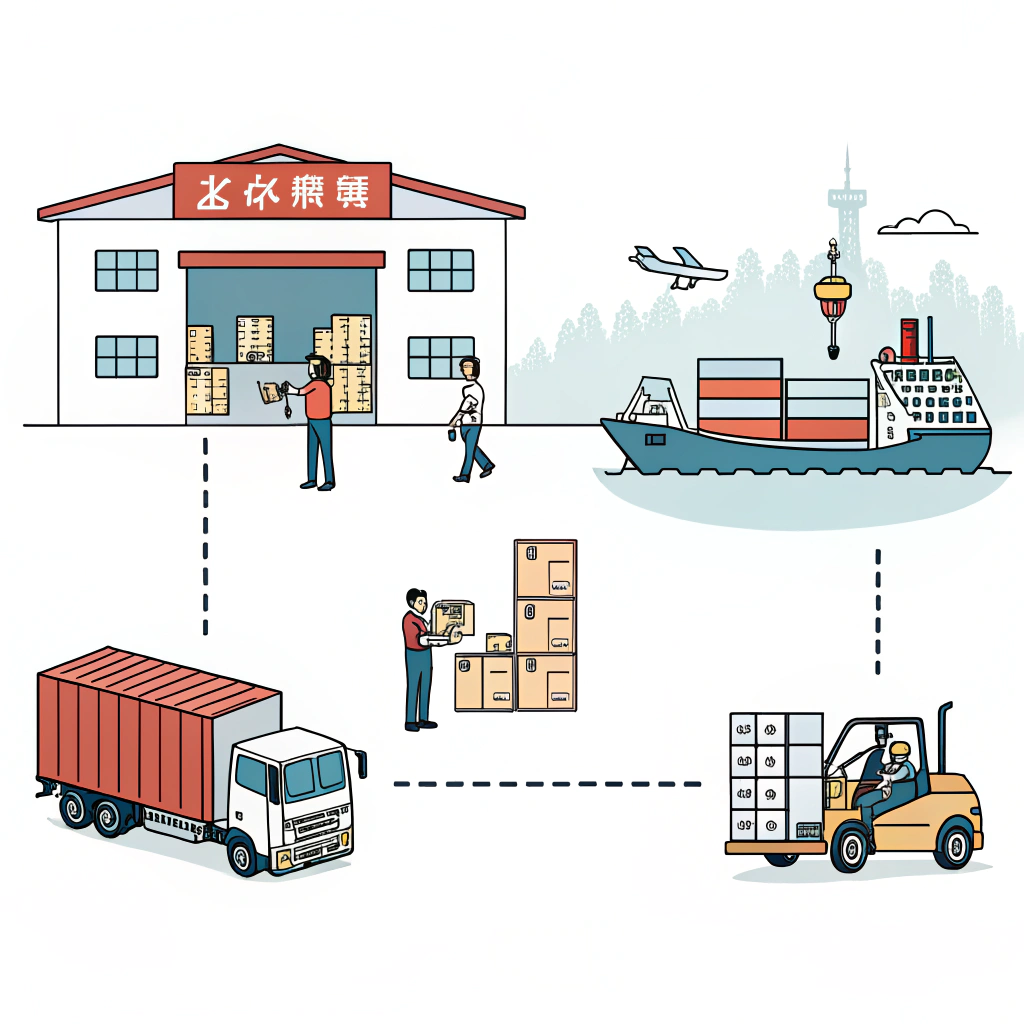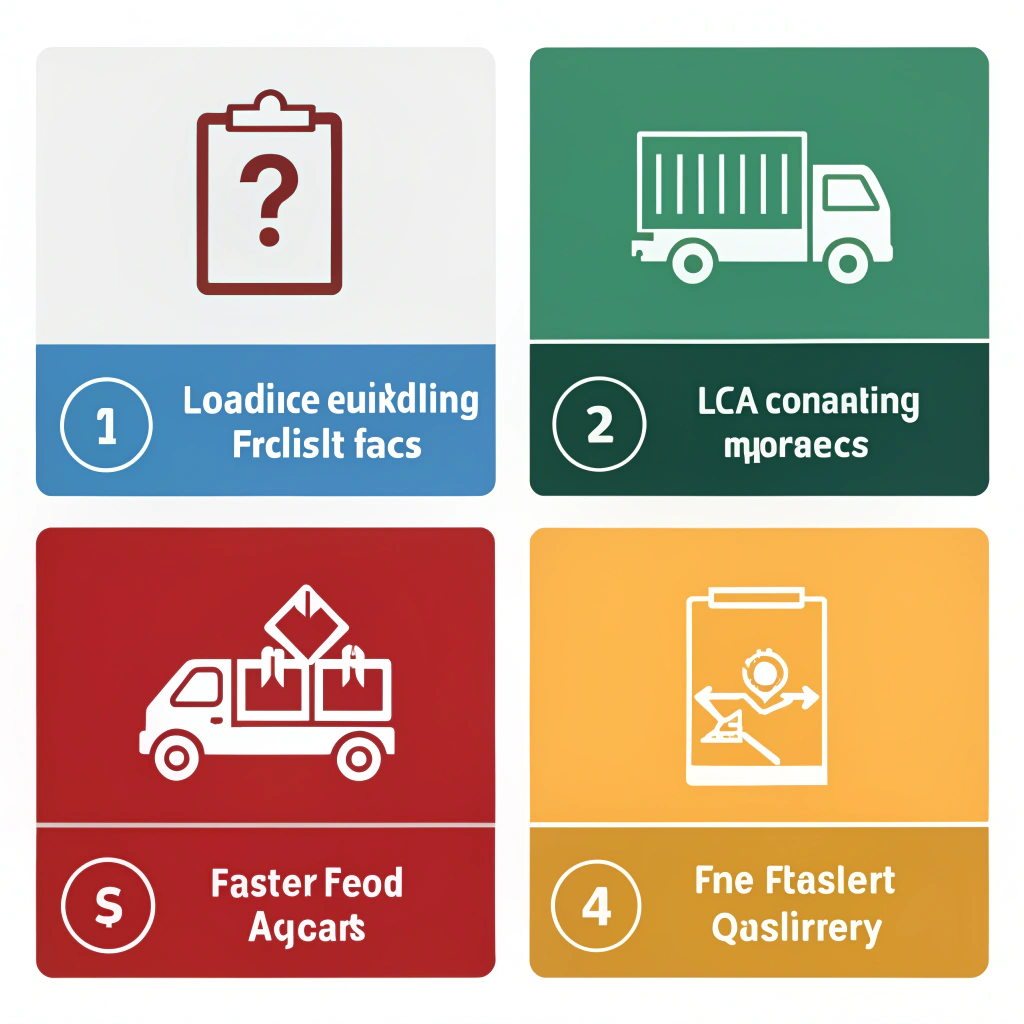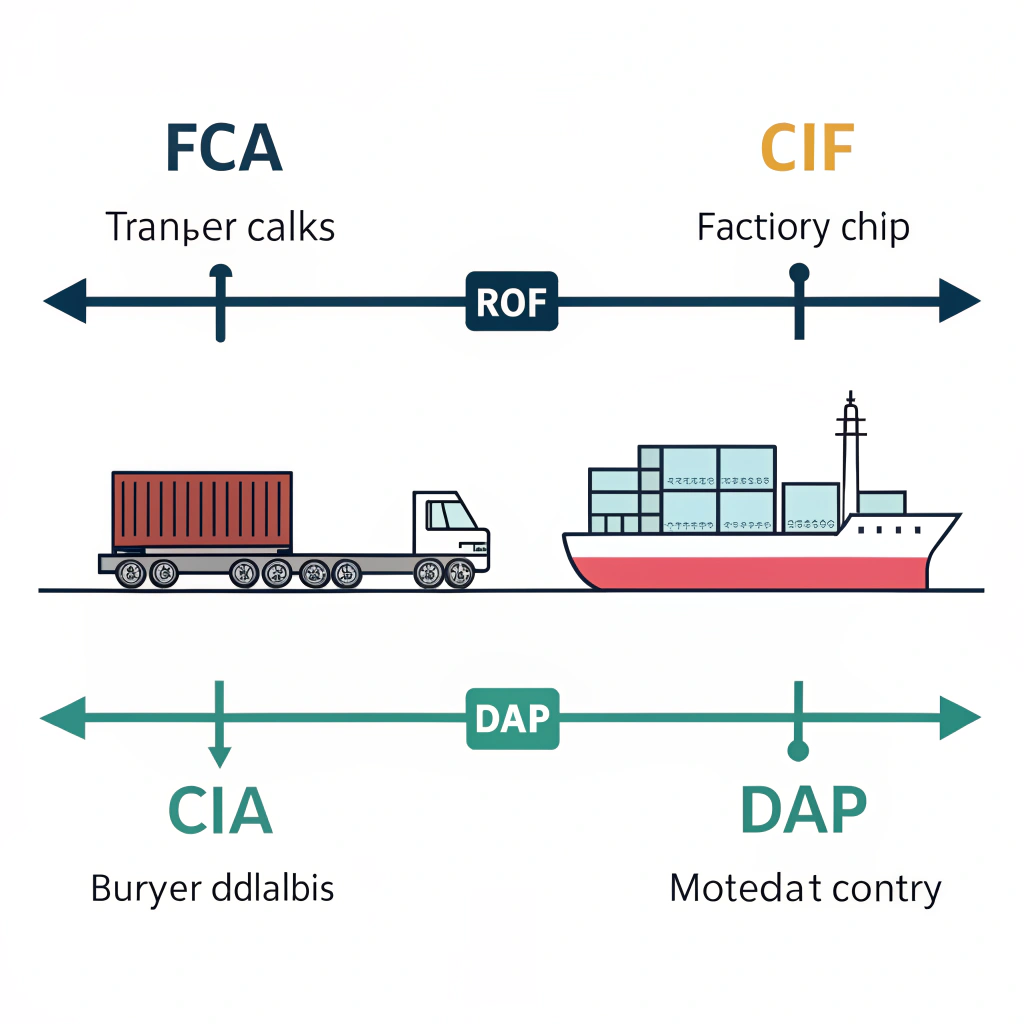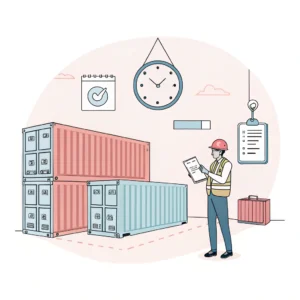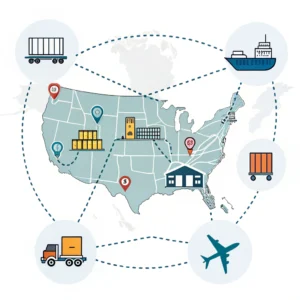Free Carrier (FCA1) is a widely used Incoterm in international trade, especially for shipments from China. It defines clear responsibilities between the seller and buyer, helping both parties manage risk, cost, and logistics efficiently. For overseas buyers importing from China, understanding FCA1 is crucial to negotiating effective contracts and ensuring smooth cargo movement.
In short, FCA1 means the seller delivers the goods, cleared for export, to a carrier or another party at a named place (often a Chinese warehouse or port). Risk transfers to the buyer at that point, who then arranges and pays for the main carriage onward.
This article unpacks FCA Incoterms 20202 simply and practically. We explain who handles what, identify typical pitfalls, and offer tips for overseas buyers shipping from China.
FCA1, or Free Carrier, is an Incoterms® 20202 rule published by the International Chamber of Commerce (ICC)3. It defines the seller’s and buyer’s obligations for the delivery and risk transfer of goods in international sales contracts.
- Export packaging: The seller packs and prepares the goods suitably for export from China.
- Customs export clearance: The seller is responsible for customs clearance and any export taxes/duties in China.
- Delivery to the named place: The seller must deliver the goods to a carrier, freight forwarder, or another party nominated by the buyer at a specified location in China (factory, warehouse, or port terminal).
- Loading (depending on place): If delivery is at the seller’s premises, the seller loads the goods. If delivery is at a different place, the buyer arranges loading.
- Carrier appointment and freight booking: The buyer selects and contracts the main carrier or freight forwarder4 from the named place onward.
- Main carriage and insurance: The buyer pays for transportation from the delivery point, including insurance if desired.
- Import customs clearance and duties: The buyer arranges import customs clearance and bears all related risks and costs after entry to the destination country.
- Unloading and inland transportation: The buyer is responsible for unloading the goods at final destination and further inland transport.
A crucial aspect of FCA1 that overseas buyers must grasp is when ownership and risk transfer from the seller to the buyer.
- Under FCA, risk transfers at the named place when the seller hands over the goods to the carrier or party nominated by the buyer.
- For example, if the named place is the seller’s warehouse, risk passes after the goods are loaded onto the buyer’s truck or carrier at that location.
- If the place is a port terminal, the seller delivers the goods to the carrier or terminal operator, and risk transfers once this handover occurs.
Knowing this exact point ensures buyers understand when goods become their responsibility and when they need to insure the cargo and manage transport risks.
Imagine a U.S.-based company imports electronic components from a factory in Shenzhen, China, using FCA Shenzhen Port5 as the delivery point.
| Task | Party Responsible | Notes |
|---|---|---|
| Export packaging | Seller (Shenzhen factory) | Standard packing for export compliance |
| Export customs clearance | Seller | Seller handles documentation and clearance |
| Delivery to Shenzhen Port carrier | Seller | Seller delivers goods to buyer’s forwarder at port |
| Loading at warehouse | Depends on place | If handover at factory, seller loads; at port, buyer usually arranges |
| Main ocean freight | Buyer | Buyer contracts shipping and pays freight |
| Import customs clearance | Buyer | Handled by buyer’s customs broker in U.S. |
| Inland delivery in U.S. | Buyer | Arranges trucking from U.S. port to warehouse |
This division prevents surprises about who must handle customs, freight bookings, or cargo insurance.
Despite FCA’s1 clarity, overseas buyers frequently encounter pitfalls:
| Mistake | Explanation | How to Avoid |
|---|---|---|
| Confusing FCA1 with FOB6 | FOB means risk transfers at ship’s rail; FCA is earlier | Verify Incoterm and delivery location clearly |
| Assuming seller handles main freight | FCA places main carriage responsibility on buyer | Clarify freight/insurance terms explicitly |
| Overlooking loading responsibility | Loading at seller premises vs other locations differs | Specify named delivery place precisely |
| Ignoring export/import clearance | Customs procedures remain separate from shipping terms | Clarify customs obligations in contract |
| Not confirming named place with supplier | Ambiguity delays delivery and risk transfer | Confirm exact place in contract negotiations |
Clear communication and contract precision with Chinese suppliers and freight forwarders prevent costly misunderstandings.
| Incoterm | Risk Transfer Point | Freight Cost Paid By Buyer | Export Customs | Import Customs | Loading at Seller Premises? |
|---|---|---|---|---|---|
| FCA1 | At named place before main carriage | Yes | Seller | Buyer | Yes, if place is seller premises |
| FOB6 | Goods passing ship’s rail at port | Buyer | Seller | Buyer | Yes |
| CIF | Goods onboard ship at port of shipment | Seller | Seller | Buyer | Yes |
| DAP | At agreed place in buyer’s country | Seller | Seller | Seller | Yes |
FCA1 offers flexibility by not limiting shipment to port delivery only — the named place can be anywhere the parties agree, making it ideal for complex logistics involving multiple carriers or inland trucking.
- Specify the exact named place in the contract: Confirm if it is the factory, warehouse, port, or freight forwarder’s location.
- Confirm who manages loading: Clarify if the seller will load at the named place or if the buyer should arrange it.
- Clarify export clearance scope: While usually seller’s responsibility, details such as export duties or special inspections should be confirmed.
- Work with a trusted freight forwarder4 or customs broker in China: They can coordinate carrier appointments, export clearance, and document preparation seamlessly.
- Consider cargo insurance: Since risk shifts early, buyers may want to insure their goods starting at the FCA point.
- Negotiate freight consolidation and door-to-door solutions: Many freight forwarders offer value-added services to combine FCA shipments with inland trucking and customs brokerage for easier supply chain control.
FCA Incoterms 20202 is a clear, flexible shipping term widely used in China export logistics. For overseas buyers, understanding FCA1 helps you identify your responsibilities and that of your Chinese supplier—especially regarding risk transfer, freight costs, and customs clearances.
By defining the precise named place and clarifying loading duties, buyers can avoid common mistakes and optimize their shipping strategy. Partnering with experienced freight forwarders who offer door-to-door solutions further reduces complexity and delays.
When negotiating your next shipment from China, carefully consider FCA’s1 clauses to improve cost control, reduce risk, and ensure smoother supply chain operations.
What are the buyer's responsibilities under FCA1?
Under FCA1, buyers must arrange and pay for the main carriage from the named place, including selecting carriers or freight forwarders4. They handle import customs clearance and related duties after the goods arrive in the destination country. If loading is required at the delivery place and it is not the seller’s premises, buyers normally organize it.
Does everything shipped from China go through customs?
Yes, all goods shipped out of China are subject to customs clearance. The seller must ensure export customs clearance and documentation. Upon arrival in the buyer’s country, imported goods are also subject to customs inspections, import duties, and fees, which the buyer handles. Working with licensed customs brokers can help manage these procedures and associated costs.
What are common mistakes using FCA Incoterms2?
Common errors include misunderstanding what FCA1 covers—only transportation risk and costs, not payment or ownership terms. Others confuse FCA1 with FOB6, overlooking that risks transfer earlier under FCA1 at the delivery place. Buyers also err by failing to specify the exact delivery point or neglecting to clarify loading responsibilities, leading to confusion and delays.
-
FCA (Free Carrier): Learn about this Incoterm to understand the division of responsibilities, risk transfer points, and costs between sellers and buyers in international trade, especially imports from China.
↩ Back to FCA terms ↩ ↩2 ↩3 ↩4 ↩5 ↩6 ↩7 ↩8 ↩9 ↩10 ↩11 ↩12 ↩13 ↩14 ↩15 ↩16 ↩17 ↩18 -
Incoterms® 2020: Explore the latest international commercial terms published by the International Chamber of Commerce that standardize shipping responsibilities and risk allocation along supply chains.
↩ Back to Incoterms® 2020 ↩ ↩2 ↩3 ↩4 -
International Chamber of Commerce (ICC): Understand the global organization that develops trade standards like Incoterms and its role in facilitating international commerce and dispute resolution.
↩ Back to ICC ↩ -
Freight Forwarder: Learn how freight forwarders coordinate and manage the transport logistics, documentation, customs clearance, and carrier booking to streamline international shipments.
↩ Back to Freight Forwarder ↩ ↩2 ↩3 -
FCA Shenzhen Port: Understand a typical named place for FCA deliveries in China, the logistics implications, and how port delivery points affect buyer and seller responsibilities.
↩ Back to Practical Example ↩ -
FOB (Free On Board): Compare this Incoterm with FCA to see the differences in risk transfer points, cost responsibility, and typical use cases in maritime shipping.
↩ Back to Common Mistakes ↩ ↩2 ↩3


